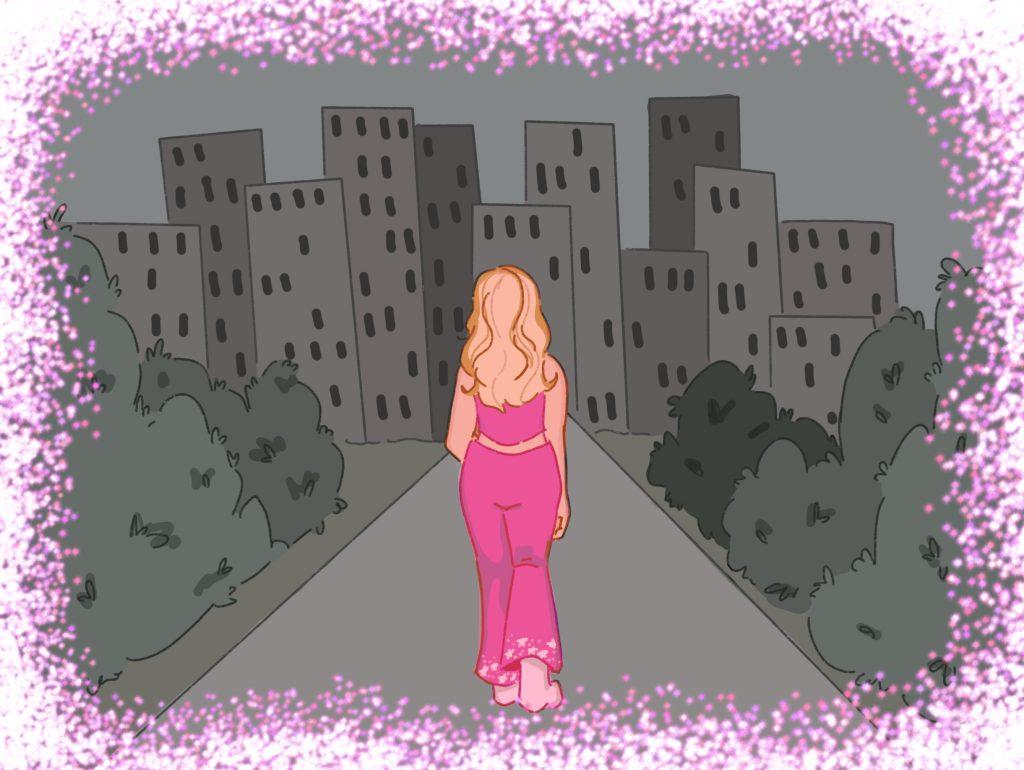
Transparency item: A review provides an informed and opinionated critique. These informed critiques are published to make a recommendation to readers. The review is the opinion of the writer. Spoilers for “Barbie” are mentioned in this article.
The movie “Barbie” is now expected to be the top-grossing film of the year. Greta Gerwig directed the movie, which was released July 21, and arrived on streaming platforms Sept. 12.
It depicts a story about one particular Barbie in Barbie Land, Stereotypical Barbie, who goes on an adventure to the real world to find peace with her owner, who accidentally projected her suffering onto Barbie.
The “Barbie” film was unexpectedly a very deep film critique of today’s culture that presents a modern woman’s perspective, including dynamic aesthetic designs and addressing problems women face that aren’t commonly talked about in society today. The movie uses unique approaches to validate both women’s and men’s issues as they are explored between Barbie Land and the real world.
However, Stereotypical Barbie faces hardships and grows as a character throughout the film, such as learning to acquire new emotions and trying to be more independent.
The film explores topics ranging from expressing oneself through color in one’s fashion sense, finding female empowerment in representation and trying to depict how patriarchy still exists in society today. The movie tends to give closure to most problems presented in the story.
However, one major problem is not resolved — the protagonist ends up sacrificing more than she may have expected when becoming fully human.
Stereotypical Barbie decides that she wants to become human and chooses a fresh start in the real world. The most interesting part of “Barbie” is that the movie ends without indicating if Stereotypical Barbie ends up finding what she’s looking for.
On one hand, Barbie’s choice to become human can be seen as a good thing. The audience has the ability to imagine what Barbie might do following the movie’s ending. Yet, in another real perspective, while Barbie appears to be maturing through this action, her choice may be a tragedy.
To be clear, there are many resolved problems in the movie. Barbie does manage to restore Barbie Land to its former glory after Ken’s frat-inspired cult breaks down.
However, Barbie still doesn’t find happiness in Barbie Land. When Barbie realizes she’s still not satisfied after the restoration of Barbie Land, the original creator of Barbie, Ruth Handler, appears in the film. In her conversation with Handler, Barbie decides to want to become fully human. Handler is delighted that her creation could become so autonomous.
Barbie does grow in the sense that she chooses to live a mortal life with the full understanding that existential issues like death — and cellulite — will not go away. Barbie’s choices may resonate with many of the audience members and present optimistic ideas that people, especially women, can be whatever they want when they put in the effort.
However, Barbie chooses to enter the real world, she does so at the expense of leaving everyone in Barbie Land she’s known and loved. While much of the film presents problems between male and female rivalries, when Barbie decides to abandon Barbie Land in pursuit of the real world, it appears as if she shows disregard for her own female friends.
Of course, this is not the only way to interpret the ending of this film. Yet with the unresolved conflict as to what Barbie’s new future might be, such good intentions like trying to find yourself might come at the cost of a healthy and stable community. In this case, Barbie ends up facing more of a bittersweet tragedy than what otherwise seems to end on only a positive message.
The movie could always change with a sequel to provide more filler to the film’s ambiguous ending. But the fact that Barbie throughout the film ends up finding less certainty in her future than she did before reflects a serious problem nonetheless.
Barbie’s decision to live in the real world could be seen as one way to appeal to many female audience members watching this film, many of whom might be reading this very article. However, one should also analyze how this otherwise virtuous pursuit of discovering oneself might just have the same unintended consequences as Barbie.
Society enables men and women to seek meaning in their lives at the expense of finding a stable community that can last a lifetime.
This problem in “Barbie” might also apply to many young adults living today. From students building their own community in high school and having to completely restart when entering college — and so forth into graduate school or the workforce— that sort of lifestyle really is taxing. While this has become all but normal in today’s society, is it a good thing?
The lack of community is a problem that is often glossed over, now more than ever. Whether it’s social media or a superficial community, I believe a lot of people forget that truly finding oneself doesn’t just mean searching for new communities.
Many times, finding oneself really comes through sticking with the same community. Finding oneself and staying with a community are not mutually exclusive. At first, it might feel liberating to try to find oneself in life. Yet, people should also realize that they might just miss out on meaningful opportunities if they choose to try to find themselves at the expense of finding belonging within a long-lasting community.
_________________
Follow the Graphic on Twitter: @PeppGraphic
Email Nate Alpern: nate.alpern@pepperdine.edu
